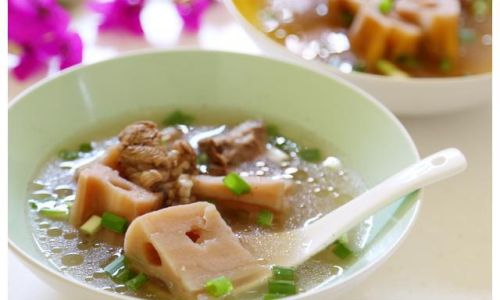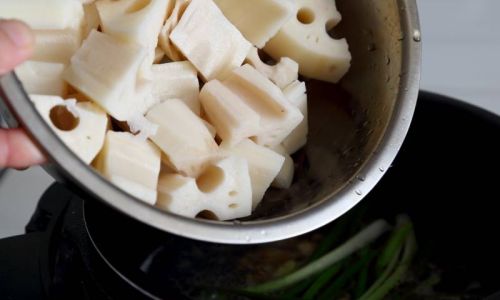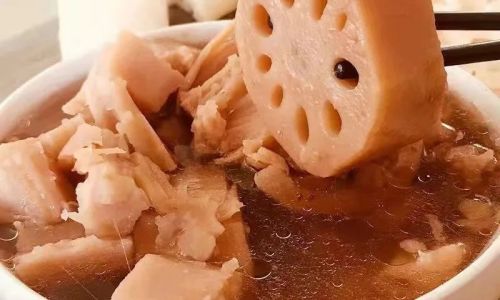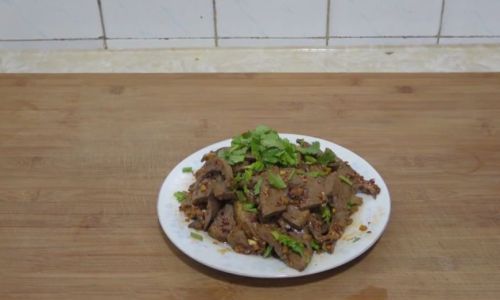Introduction
Soup, a cornerstone of culinary art across various cultures, holds a special place in the hearts and stomachs of many. It is not merely a meal but an experience—a harmonious blend of flavors, textures, and nutrients that nourish the body and soul. Among the myriad of ingredients that can elevate a soup to greatness, lotus root stands out for its unique texture and subtle sweetness. Known for its versatility and nutritional benefits, lotus root adds a touch of elegance to any soup, especially when cooked to achieve that desirable silky, or “powdery,” consistency. This article delves into the intricacies of how to prepare lotus root in a soup so that it attains the perfect, velvety texture, transforming an ordinary dish into a culinary masterpiece.
Understanding Lotus Root

Lotus root (Nelumbo nucifera), a aquatic plant native to Asia, boasts a rich history in traditional medicine and cuisine. Its long, cylindrical rhizomes are filled with air canals, giving them a distinctive appearance and texture. When sliced, these canals create a beautiful pattern that not only enhances the visual appeal of dishes but also allows the lotus root to absorb flavors efficiently. Nutritionally, lotus root is a low-calorie food rich in dietary fiber, vitamins, and minerals, making it an ideal addition to health-conscious diets.
The Importance of Texture in Soup
Texture is a critical element in soup-making, influencing both the mouthfeel and overall enjoyment of the dish. Silky, or “powdery,” lotus root in soup refers to a texture that is smooth, creamy, and almost melt-in-your-mouth. Achieving this consistency requires careful selection, preparation, and cooking techniques. It’s not just about the lotus root itself; the entire cooking process, from choosing the right ingredients to mastering the cooking time and temperature, plays a pivotal role.
Selecting the Perfect Lotus Root
The first step towards making silky lotus root soup is selecting high-quality lotus root. Look for firm, unblemished roots with smooth skin and no signs of softening or mold. Fresh lotus root should have a crisp snap when broken and should be free of brown spots or cracks. If purchasing dried or canned lotus root, ensure it is free from additives and has a natural color.

Preparation Techniques
-
Cleaning and Peeling: Begin by thoroughly washing the lotus root under running water to remove any dirt or debris. Use a vegetable peeler or knife to gently remove the outer skin, being careful not to cut into the flesh too deeply as this can affect the final texture.
-
Slicing: For soup, slice the lotus root into thin rounds or matchsticks. The thinner the slices, the quicker they will cook and soften, contributing to the silky texture.
-
Soaking (Optional): Some recipes recommend soaking lotus root slices in water with a pinch of vinegar or lemon juice to prevent discoloration. While this step isn’t essential for achieving silky texture, it can enhance the visual appeal of your soup.
Cooking Methods

-
Boiling: Boiling is a straightforward method for cooking lotus root in soup. Start by bringing a pot of water to a rolling boil. Add the sliced lotus root and cook for about 10-15 minutes, or until tender. The key to achieving silky texture here is not to overcook, as lotus root can become mushy if boiled too long.
-
Simmering: For more flavorful and textured soups, simmering is preferred. Combine lotus root slices with other soup ingredients and broth in a heavy-bottomed pot. Bring to a gentle simmer, then reduce the heat and cook slowly for about 30 minutes to an hour. The slow cooking process allows the lotus root to absorb flavors and develop a creamy consistency.
-
Pressure Cooking: For those short on time, a pressure cooker can be a valuable tool. Place lotus root slices and soup ingredients in the cooker, add enough liquid to cover, and cook according to the manufacturer’s instructions for vegetables. Pressure cooking tends to preserve the color and texture of lotus root while ensuring it’s cooked through.
Seasoning and Flavor Enhancement
While the focus is on achieving silky lotus root, don’t neglect the importance of seasoning and flavor enhancement. Complement the natural sweetness of lotus root with ingredients like ginger, garlic, onions, and aromatic spices like star anise or cinnamon. For a richer broth, consider adding pork bones, chicken feet, or dried seafood like shrimp shells. These ingredients will not only deepen the flavor profile but also contribute to the body and silkiness of the soup.

Final Touches
Once the lotus root has reached the desired texture, it’s crucial to adjust the seasoning of the soup. Taste and add salt, pepper, or other condiments as needed. A drizzle of sesame oil or a sprinkle of chopped scallions can add a refreshing finish. For an added touch of elegance, garnish with edible flowers or a sprig of fresh herbs like cilantro or parsley.
Serving and Enjoying
Serve your silky lotus root soup in warm bowls, ensuring each serving includes a generous portion of the cooked lotus root. Pair it with steamed rice, noodles, or a simple salad for a complete meal. The beauty of this soup lies in its simplicity and versatility—it can be enjoyed as a comforting breakfast, a light lunch, or a soothing dinner.
Conclusion

Mastering the art of making silky lotus root soup is a rewarding culinary endeavor that combines precision, patience, and a love for good food. By understanding the nuances of selecting, preparing, and cooking lotus root, you can transform this humble ingredient into a star of your kitchen. Remember, the key to success lies in balance—not overcooking, using high-quality ingredients, and seasoning thoughtfully. With practice, you’ll soon be serving bowls of silky, flavorful lotus root soup that will delight your family and friends, leaving them yearning for more. Happy cooking!






0 comments